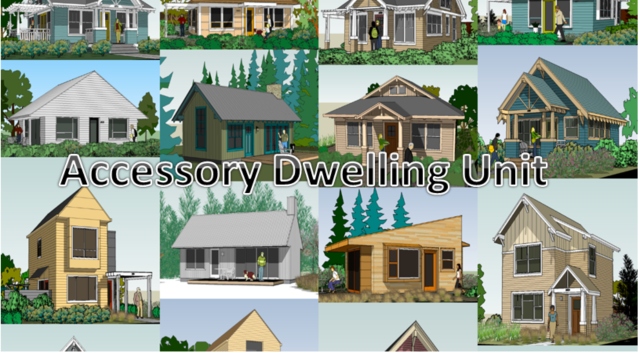
Types of Accessory Dwelling Units
Types of Accessory Dwelling Units
There are three types of Accessory Dwelling Units (ADUs): interior, attached, and detached ADUs.
Interior ADU – Located in the primary dwelling, an interior ADU is built from existing converted space, usually an attic or basement.
Attached ADU – These additions adjoin the primary dwelling – to the side or rear of the home, or constructed on top of an Garage attached.
of type detached the ADU -. A Stand-alone The Primary Structure separate from the ADU detached dwelling CAN BE A Built Entirely separate Unit or AS AN Constructed over existing Accessory Structure, SUCH AS A detached Garage.
DEFINING THE UNIT ACCESSORY dwelling
Under new California state laws, the term “accessory dwelling unit” describes a small, self-contained residential unit located on the same lot as an existing single-family home. An ADU is generally smaller in size while still including all of the basic amenities Found in a primary dwelling, such as a kitchen, bathroom and sleeping area.
Today, ADUs go by several names: granny unit, granny flat, in-law suite, in-law cottage, mother-in-law apartment, or secondary dwelling unit. Historically, each of these terms had a unique meaning depending upon the city Or county in which the primary dwelling was located. Nowadays, however, they are often used interchangeably.
CALIFORNIA LAW & ITS EFFECT ON ADUS
Existing California law permits the construction of ADUs. However, local ordinances have – perhaps unintentionally – made it difficult for homeowners to build new units by imposing standards at the city and county level to regulate parking, construction, and Lot coverage.
Fortunately, in September 2016, Governor Jerry Brown signed three ADU-related bills in an effort to address California’s housing crisis. These new bills also make it easier for California homeowners to obtain permission for ADU construction from local governing bodies.
Senate Bill 1069 reduces or eliminates parking requirements and utility hook-up fees. It also speeds up the approval process for second units attached to a primary residence.
Assembly Bill 2299 goes further than SB1069, requiring local second-unit ordinances to includ e ministerial, non-discretionary approval for any second unit that meets city requirements.
Assembly Bill 2406 streamlines the process for homeowners converting an existing bedroom into an attached studio living unit.
All of these laws intend to limit the ability of local government to regulate ADUs and local governments are required to adopt an ADU ordinance in accordance with the new state requirements by January 1, 2017.
Additionally, these laws will speed up the approval process of ADU construction. They will also remove secondary utility hook-up fees that have been paid for by the primary dwelling owners. Furthermore, the laws will eliminate parking requirements for ADUs located in proximity to public transit.
Acton Construction is staying on top of the local zoning ordinances in Santa Clara County, with an eye on those successfully promoting the construction of ADUs. Check out the latest on ADU development in your city:
Cupertino: http://www.cupertino.org/index.aspx?page=599
Palo Alto : http://www.cityofpaloalto.org/gov/depts/pln/advance/accessory_dwelling_units_regulations_update.asp
Los Altos : http://www.cityofpaloalto.org/gov/depts/pln/advance/accessory_dwelling_units_regulations_update.asp
San Jose : http://www.sanjoseca.gov/index.aspx?nid=2107
